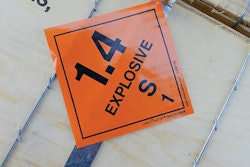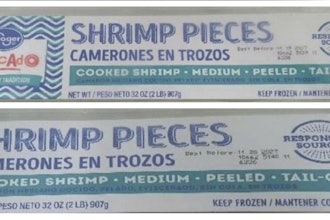Metal detection system are designed to detect foreign material — specifically ferrous, non ferrous and stainless steel metallic contaminants in food products — and to prevent those products from reaching and harming the consuming public. For years, these systems have been hampered from doing their job efficiently and effectively by what is known in the industry as “product effect" — an effect produced by certain product properties (e.g., high salt or iron content) that mimics metal contamination and causes the metal detector to false trigger.
A new technology has now been introduced that dramatically reduces product effect and increases the reliability of inspection by minimizing false rejects. This, in turn, reduces the risk of contaminated product reaching the public, where it can not only cause harm to consumers but also damage to the brand image of the manufacturer involved, and even lead to costly liability issues.
Metal Detection Technology
A metal detector is a simple, yet effective and reliable inspection device. It essentially consists of three sets of electric coils that are “balanced.” These coils are made up of copper wire wound around a central square or round coil former that creates the aperture through which products pass when being inspected. The center coil is the transmitter coil and the outer coils are the receiver coils. The metal detector electronics transmits a high-frequency signal to the transmitter coil, which generates a magnetic field within the aperture. This field, in turn, induces a small voltage in each of the receiver coils, which have reversed polarities.
The metal detector measures the difference between these two voltages, which should be zero when there is no product being inspected. (In reality, a metal detector is rarely perfectly balanced, and the metal detector’s controls are designed to compensate for small imbalances in the coil system.)
When a metal object (such as a metal contaminant in a food product) passes through the aperture, it disrupts the balance of the voltages in the receiver coils. The metal detector interprets this as the presence of a metal contaminant and identifies the product for rejection. Metals detectable by this method include ferrous, non-ferrous and stainless steel (e.g., chrome steel, aluminum, copper, brass, etc.)
Product Effect
What complicates this simple, yet effective and reliable process is what the industry calls "product effect." Product effect is caused by certain characteristics of the product being inspected, such high salt or iron, which can disrupt the voltage balance between the receiver coils. This disruption causes the metal detector to react as it would to a metal contaminant when none is present, resulting in a false reject. The product characteristics that create product effect increase the conductivity of the product being inspected, and can include high moisture content (especially salt water) in products such as fresh meats and baked goods. Thermal changes in products traveling along a processing line, as warm products cool and frozen products begin to thaw, can also create product effect. These changes can be especially problematic when circumstances cause the line to slow or stop. Product temperatures changing as little as 5°C can affect the product’s signal (product effect) in the detector and produce a false reject.
Metal detectors are very precise instruments, designed to detect even very small metal contaminants –– bits of screen wire, metal slivers, swarfs, etc. –– in products that are often thousands of times larger than the contaminant. It is not surprising, then, that product effect can sometimes make it difficult for the detector to distinguish contaminants from product variations (moisture content or temperature).
In addition, the orientation of the product as it passes through the metal detector can affect the detection result. Packaged products passing through the metal detector short-end first or long-end first will produce different signals (product effect). In addition, on an active production line, several products may pass through at the same time. Positioning directly affects the product effect within the detector. Similarly, the position of the product within the aperture –– whether in the middle of the opening or toward one side –– can also affect the signal.
Mixed products –– packaged dinners of meat, potatoes and vegetables, for example –– present a different conductivity than a single piece of boneless beef, which is, in turn, different from a bone-in piece of beef. Product effect can also be affected by certain packaging when packaged products are inspected, especially if the packaging includes metallized film.
Clearly, there are many factors that affect the characteristics of a product, and they are difficult to control on a production line that may be primarily focused on throughput. To compensate for the variations in products, metal detector sensitivity is oftentimes reduced to allow products to pass through without creating false rejects. However, this also means that sensitivity for metal inspection is also lowered, which can allow contaminated product to pass inspection and reach the consuming public.
Reducing Product Effect
Metal detectors can be designed to operate at a variety of frequencies — from as low as 25 kHz to over 900 kHz. The signals generated by products passing through the aperture are directly related to the frequency of the detector. In a metal detector operating at 900 kHz, the magnetic field in the aperture changes polarity 900,000 times per second, and the resulting eddy currents generated in the product are much stronger than in one operating at 25 kHz. However, at higher frequencies the amount of power that can be switched into the transmitter coil is limited, resulting in a magnetic field created in the aperture that is lower than that at lower frequencies. The result is a higher product effect.
Traditional metal detector technology has always resulted in a tradeoff between product effect, maximum operating frequency and detector sensitivity. The higher the product effect (i.e., the wetter the product), the lower the optimal operating frequency and, as a result, the lower the sensitivity of the detector. Conversely, the lower the product effect (i.e., the dryer the product), the higher the operating frequency can be, successfully detecting smaller metal contaminants.
In addition to varying operating frequency, another technique used in today’s metal detectors to detect even smaller metal contaminants is phase discrimination, also called phase filtering and phase control. This technique enables a detector to discriminate between signals, minimizing the product effect signal and amplifying the metal contaminant signal. It does this by learning the characteristics of the product signal and placing a “discrimination envelope” around that signal to effectively ignore it while detecting signals outside the envelope. The advanced metal detectors on the market today incorporate a dedicated Digital Signal Processor (DSP) that handles phase discrimination and other advanced signal processing techniques, enabling them to be more effective at detecting contaminants.
Multi-Simultaneous-Frequency Metal Detectors
The most sensitive metal detectors available today are known as multi-simultaneous-frequency (MSF) detectors. They operate at more than one frequency simultaneously, which enables them to meet the challenge of product effect in an innovative way.
These sophisticated new systems use built-in Product Signal Suppression (PSS) technology that incorporates two stages of discrimination — frequency and phase. This technology cancels the input information from the combined low and high frequencies to effectively remove the product effect signal, allowing them to detect even smaller metal contaminants.
This new technology also enables the metal detector to deal effectively with product variations. A metal detector is “taught” the characteristics of the product it is to inspect. In less sophisticated systems, even slight variations in individual product characteristics such as moisture content or temperature can result in false rejects. Product Signal Suppression technology enables the system to adjust for product effect variations in each product and consistently detect small contaminants. This technology can even compensate for the variation caused by several products passing through the metal detector simultaneously.
The result of this new technology is an improvement of metal detection effectiveness in multi-simultaneous-frequency detectors over single-frequency detectors of as much as 50 percent, even in metallized film applications.
In challenging metal detection applications, operating to a factory-detection standard has long been difficult to achieve in terms of product effect. Efforts to improve detection of contaminants have often involved increasing metal detector sensitivity, resulting in increased false rejects of good product. This can be extremely costly for manufacturers, and companies have sometimes attempted to reduce this loss by reducing detector sensitivity — passing more products but also enabling some metal contaminants to be released into the marketplace.
The development of MSF and Product Signal Suppression technology now gives manufacturers confidence that they can reduce — or even eliminate — costly false reject rates while also successfully detecting even the smallest metal contaminants in their products.






















